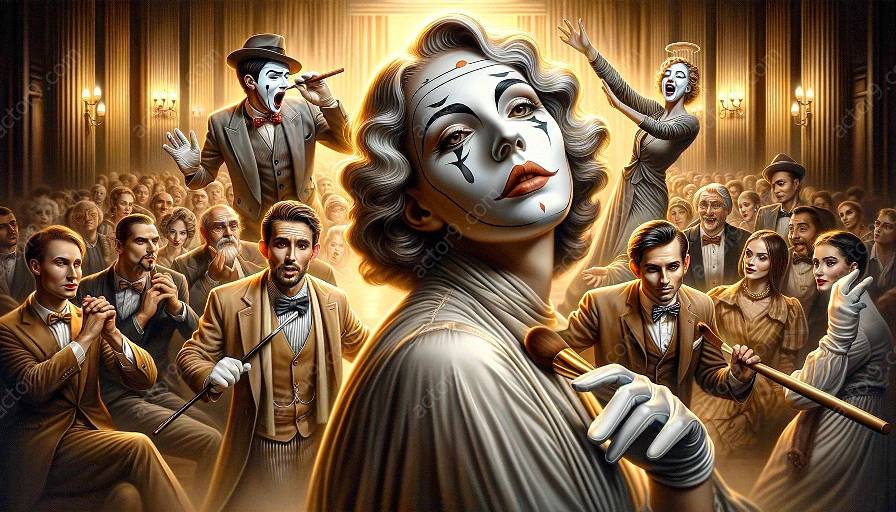Mime and physical comedy hold a unique place in the world of performing arts, offering audiences an extraordinary blend of laughter, astonishment, and emotion. In this topic cluster, we will delve into the profound psychological and emotional impacts of mime and physical comedy, exploring the art form's ability to evoke strong emotions, portray complex psychological states, and connect with audiences on a deeply human level.
The Art of Mime and Physical Comedy
Mime and physical comedy are forms of expression that transcend language and culture. They captivate audiences through the power of body language, gestures, and facial expressions, often without the need for spoken words. By carefully choreographing movements and expressions, mime and physical comedians can create rich, nuanced narratives that elicit a wide range of emotions, from joy and amusement to empathy and introspection.
Psychological Impact of Mime
Mime, with its emphasis on non-verbal communication, has the ability to tap into the deepest recesses of human psychology. Through the manipulation of space, objects, and imaginary forces, mime artists can portray complex psychological states such as fear, longing, and confusion. The silent nature of mime allows the audience to project their own emotions onto the performance, leading to a deeply personal and introspective experience.
Emotional Journey of Physical Comedy
Physical comedy, characterized by exaggerated movements, slapstick humor, and comedic timing, has the power to elicit spontaneous and visceral emotional responses from its audience. The often unexpected and exaggerated nature of physical comedy can trigger laughter, surprise, and even empathy, as audiences connect with the characters and their humorous predicaments on a deep emotional level.
Famous Mime Artists and Physical Comedians
Throughout history, numerous artists have made significant contributions to the world of mime and physical comedy. Notable figures such as Marcel Marceau, known for his iconic character Bip, and Charlie Chaplin, celebrated for his timeless portrayal of the Tramp, have left an indelible mark on the art form. Their ability to convey complex emotions and capture the human experience through mime and physical comedy has resonated with audiences across the globe for generations.
Delving into Mime and Physical Comedy
As we immerse ourselves in the world of mime and physical comedy, we gain a deeper appreciation for the art form's capacity to explore the human psyche, provoke empathy, and ignite a sense of wonder. Through the silent language of movement and the universal appeal of comedic expressions, mime and physical comedy continue to captivate and enlighten audiences, leaving a lasting impact on the world of performing arts.


























